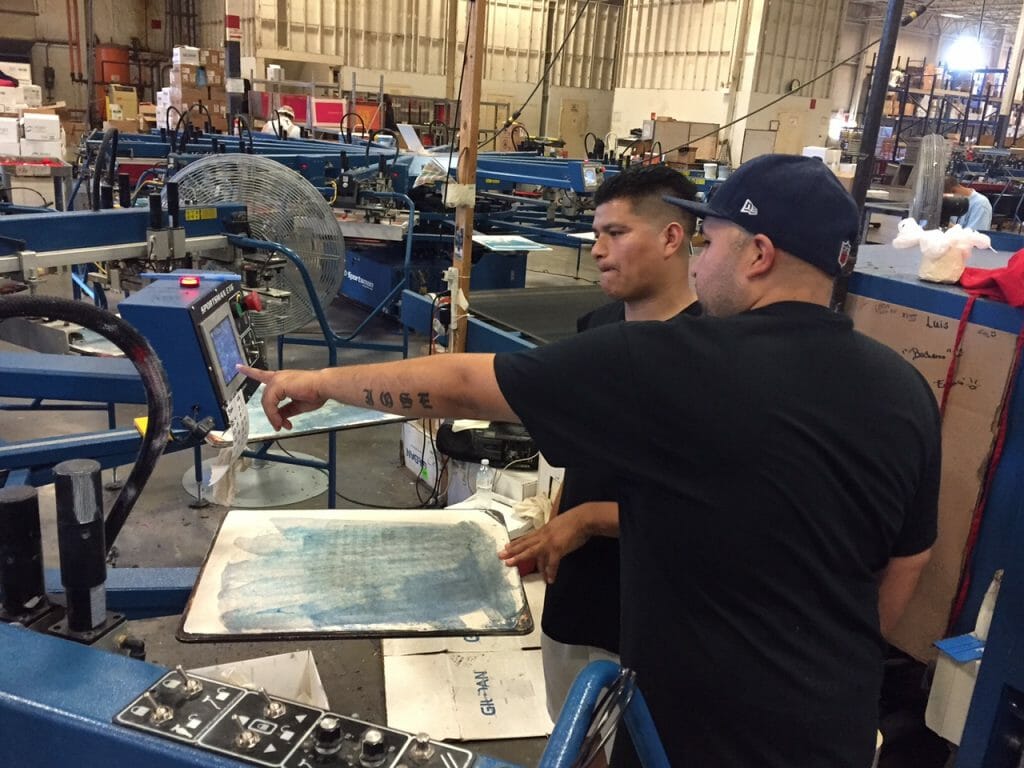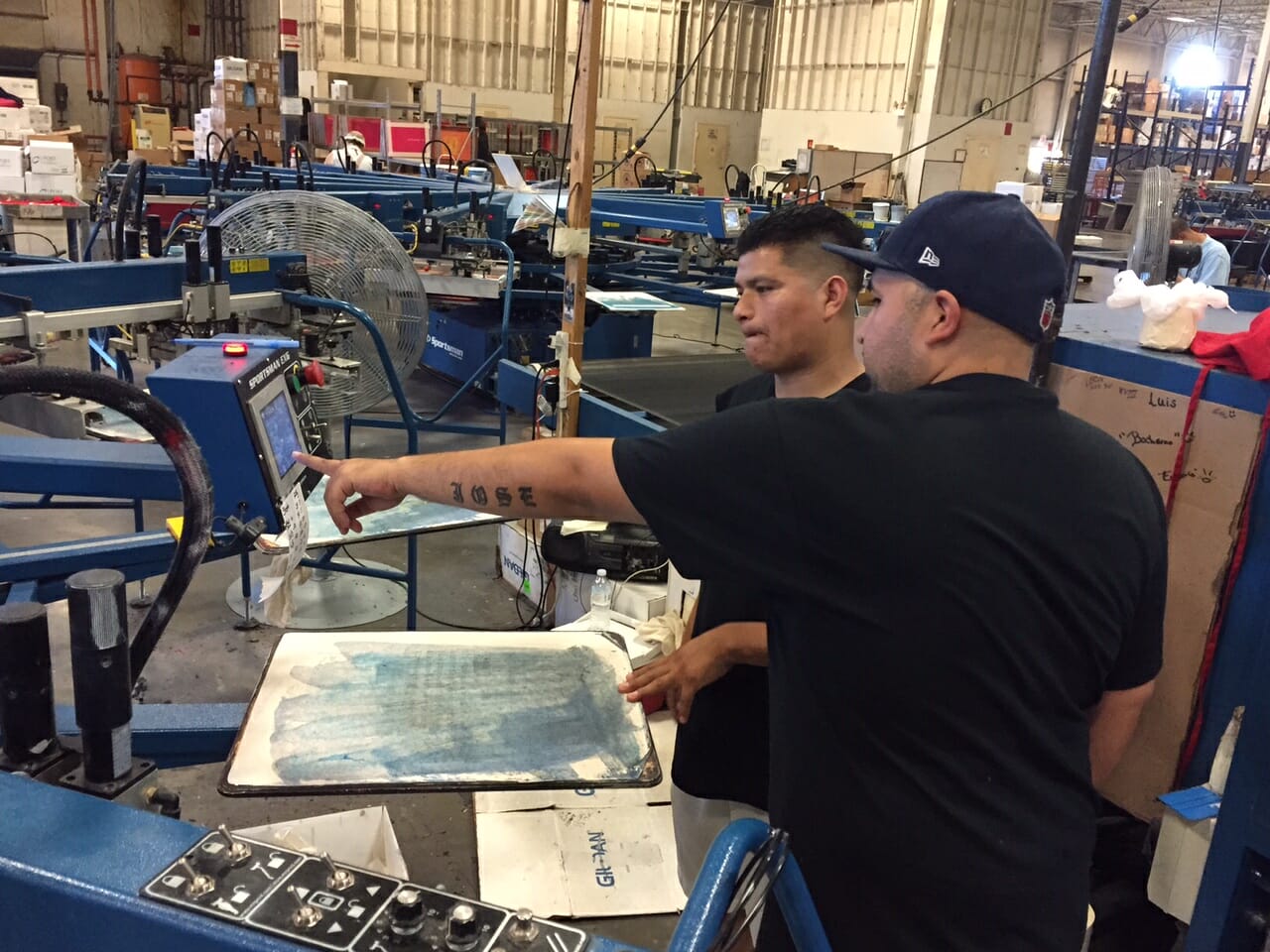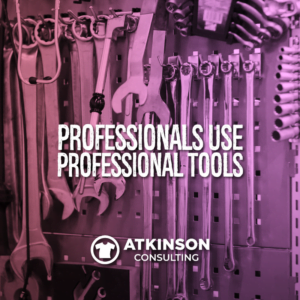Are you happy with the way your shop runs every day? Every facet of how you print or embroider a shirt? For the most part, probably yes.
However, I’ll bet that there are some aspects of your company that you don’t like.
Customer challenges when entering orders, too many misprints, rampant thread breaks, screens where the emulsion doesn’t wash out correctly. Rising consumable costs. Problems with the building. Dye migration. Digital pretreatment woes. Not enough time in the day to get it all completed.
That “get around to it” list of things you want to change is probably fairly large if you ever bothered to write it all down.
Maybe you wanted to learn to print with waterbased inks or take a sales trip and see some new potential customers. How about starting a employee performance review program?
That trade show came and went. “Next year”, you say to yourself.
There could be even some bigger fish to fry. Roller coaster sales, where at certain times of the year you can’t get everything produced without insane overtime, but in some months you are sending people home early – on a Thursday.
When it all comes down to it, the only person you can blame is you. Sure, it’s easy to shrug your shoulders and blame something or someone else. But at the end of the day, you let it happen.
None of those things got started. None of those things are operational and live in the world of “how we do things now”.
I could write a gigantic list of all the excuses I’ve heard (and actually made myself) over the years, but you already know yours. You say them to yourself every day. So why don’t we get off our butt and make this stuff happen?
Because change is hard. Not doing something is easier.
It’s all about priorities. If something really matters to you, nothing will stop you from making it happen.
Remember not too long ago when there weren’t the insane number of distractions we have daily? Nobody carried their phone around with them everywhere. People didn’t get upset if something took longer than five seconds to do. Customers valued the work and skill that went into making something, and didn’t try to find it for a nickel cheaper online while they are still talking to you. Customers didn’t ask for quotes over text messages or Facebook at 10:45 at night.
One way to get some of your mojo back is to turn off all of the distractions. Roll up your sleeves and knuckle down. You have to want to do it. Put first things first. Get the job done.
Out in the shop? Throw that favorite track on the shop stereo and completely and utterly ruin a shirt or two while trying to conquer something new. Don’t worry about the results. I promise you, it will be fun. This is why you got into this business. To master the craft. Don’t stop until you have perfection. Great chefs cook a lot of meals that don’t quite work until they master that recipe. It’s ok to fail while learning. Let yourself do it.
In the office? Close your door. Flick your phone over to do not disturb. Don’t check your e-mail for two hours. Now…start that project you’ve been putting off. You know the one. It’s been on the back of your mind for almost two weeks now. What are you waiting for?
In your car? Take five minutes and swing by your best customer for no reason at all. Just drop by and thank them for their business. Don’t sell anything. Ask about them instead. Strengthen your relationship. You’ll be glad you did. Those online websites don’t do that.
Coming back? Pull into the grocery store and buy some ice cream and a cake. Bring it back to the shop. Stop everyone and say thank you for all of their hard work. Tell them how much you value their skill and creativity. The smiles on their faces will be worth it.
Change is hard because we don’t put a value on it. We don’t make it a priority. We don’t involve the people that can influence us the most to make the right decision. We think we are alone on an island with just our thoughts; when in fact we are surrounded by multitudes of people that can make the change we seek easier.
All you have to do is ask. That’s the scariest part of all. Asking.
So maybe you have some things you’d like to change with your shop, but can’t seem to get any traction. Below are ten tips that could help you get going.
One: Be careful how you describe the problem.
Our words matter, especially when we are speaking with our staff. When there is something that needs to be changed, we often describe it in the worst way possible for dramatic effect. “I’m sooooo fat and I need to lose weight!”, really isn’t an inspiring way to describe a problem. Especially standing in front of an open refrigerator door at 10:45 pm.
If you flip the phrase into something more meaningful, it could have a better effect, “I need to get healthier and make better choices!” Rethinking how we position the statement, can lead to a way to find a resolution.
Can you redescribe a challenge in your shop so it positions the situation for a more positive result?
Two: Normalize the Problem.
Got a big issue that you need to solve? Your gut reaction may be to really freak out about it. Just the thought of changing or doing something is making your stomach upset.
That’s one of the reasons we avoid changing these bigger issues, is that we know deep down the turmoil that it’s going to take to conquer it. We never start to just avoid that helpless feeling.
Somehow you need to just make the problem you want to change more normal, like doing the dishes. (unless you are my son, he can get worked up about having to do the dishes…)
Anxiety doesn’t ramp up about the normal stuff we do all the time. If you adopt the mentality that you should be always working on change, and that it is a normal part of your day you are more apt to just get started and work on it.
Adjust your mentality. Change is normal. Status quo is not.
Three: Ask the Right Questions.
Often we don’t start on our change because we don’t know how to get going. Take out some paper and a pencil and jot down some questions that you need answered to get going.
“What” do you need to get started?
“Who” can help you on the task?
“Where” should you start first?
“How” did the problem start?
“Why” is it a problem anyway?
Maybe you don’t have all the answers, but it is really important to know the questions to ask.
Answers can be researched as soon as you know the questions. It is a great place to start any change you need.
Four: Break It Down Into Smaller Chunks
Sometimes huge problems exist because they are so large it is intimidating to even consider starting. An easier way to get it handled is to break the project down into smaller manageable chunks of time.
Make each chunk an action goal, with one due date. Work backwards from the end. I personally like using a spreadsheet, but you could just use a piece of paper or whiteboard too.
After you complete each step, highlight that goal. As you progress, you’ll see your list start turning all one color. The more color you see, the more satisfaction you’ll have with your change project. For me, I highlight completed tasks in green. Green means go to me, and the more green I see on that list the faster I feel we are accomplishing the task list.
For even quicker resolution, delegate some of the chunks to other people to handle. Your job then is to just follow up and make sure they are completed satisfactorily. Make sure you give expectations on the goal, and assign a due date that they agree with before starting. Don’t just dump it in their lap, but get them involved. Collaborate.
Five: Use the Power of Social Pressure
One trick that could work for you is to envelope others into your goal to “keep you honest” and to help you along the way with advice and encouragement.
If you belong to a social media group on Facebook or LinkedIn, this could be a great way to get the support from other industry professionals. I see a lot of shops using this technique and the information they glean from it is priceless.
Warning: sometimes the answers people post are too nice. If you are wanting honest critiques of your work (let’s say you are trying out puff embroidery or learning CMYK printing) make sure you state that you are looking for criticism so you can get better. Otherwise you’ll just get ten responses that all just say “Lookin’ good!”
Synchophantic responses don’t help you improve.
Feedback is welcome, but be prepared. Your psyche might take a hit when someone suggests an improvement. Don’t argue, just absorb what they say and recognize that there may be some truth to what they express. Use it or don’t, but thank them for their time.
Six: Stop What’s Not Working
What if you have an issue that you are wanting to change, but the current version just isn’t working at all or costing you money? Make sure you just stop doing whatever is the problem until you can learn how to do it properly.
Staff in our shops have to be using their brains. If something isn’t working, do you have people on the floor that will just continue printing, or doing that action even though they are getting negative results?
Make sure people know to stop!
One of the great things that came out of the Toyota Production System (TPS) that made that car company so great was the ability for any worker in the plant to literally stop the entire production floor by pulling a red cord, should they encounter a quality problem. A team of engineers and other workers would swarm over and work on the resolution right then and there. The average time it took to solve a problem is about a minute, and currently that cord is pulled over a dozen times a day. This is called Jidoka. (New vocabulary word! Don’t freak out!)
Can your team “pull the red cord” for quality? How do you know? For a lot of shops there is so much pressure to ship the order that staff sometimes will just pack up the problem and ship it. Be mindful of quality and support your team when they discover a problem. Help them resolve it, and thank them for bringing it to your attention.
Mistakes don’t always need a yell-a-thon lecture. These are learning opportunities if you handle them the right way.
Seven: Get Your Support System Together
You’ve got help surrounding you. Are you using them to help activate the change you need?
You should start with your employees when assembling a team. After all, they are the ones that will be invested in the change. Without their support, the change will be harder. Remember the phrase, “Man supports what he helps create”. Even if you already know the answer, direct the conversation from your employees so that they embrace what’s needed, and think that the idea came from them. Who cares about credit? It is the end result you seek.
Other people you can add to your team is your supply chain. Your vendors might know of a better way to do something, or have a better performing item you can use. Reach out to them for ideas and even for product demonstrations. These are great, because if you get the right item to solve the problem, but aren’t using it correctly you aren’t going to have the results you intend.
I’m also a big advocate for having mentors or your own personal board of directors. These folks can help you see the macro view of your problem. Whether these people are volunteering their time, or you are compensating them, the important thing is to reach out to them occasionally for advice. When you initially start your change program, you might go to them with the problem and see what they have to say about it. They might discover that your challenge isn’t what you think, or suggest better ways to overcome the issue.
Eight: Discuss With Others
Change can’t be a secret. This needs to be a full fledged conversation where ideas are presented, respected, discussed and the outcome should be some sort of an action plan.
I know you’ve heard all about brainstorming before, where “there isn’t such a thing as a bad idea”. However, in practice leaders often don’t give that vibe and people are reluctant to express their opinions. You’ve been there with your group discussion before and you realize you are the only one talking. You have to have an atmosphere that people want to contribute and collaborate to resolve challenges.
One thing you might try is to delegate the challenge to a committee to come back to the group with two or three ideas to discuss. Give them time and a meeting space separate from the group. Letting them discuss the option in private just might be the ticket for determining a great way to solve the problem by the people that have to live with the results.
Just make sure you have an action plan outlined with due dates and responsibilities assigned. Steve is going to do this by Wednesday, and Mary is going to do that by Friday.
Nine: Alter Your Expectations
One of the biggest reasons why people don’t start on their change project is that they feel they have to conquer the problem totally, and that the end result must be perfect.
Perfection is an illusion. All you really want is better.
At the end of the day if you get 21% more efficiency out of something, or save 13% on the cost…guess what? It is still better than what you were doing yesterday!
Over time you can still refine things. Nobody says that you can only change things once. The important thing to remember is that you can keep working on something, refining it, changing it, tweaking it, or just decide to eliminate it altogether. The journey will dictate how you approach the end conclusion.
How much better will you be a year from now if you improve only 1% each day? Sometimes a daily small goal is easier to achieve than a gigantic one farther out.
Ten: Celebrate – Good Times, C’mon!
I know you just read that in your best Kool and the Gang voice. Sorry for the ear worm.
As cheesy as that sounds, celebrating is one of the most important things you can do when working with people.
Regardless of your final outcome, it is crucial to acknowledge the effort and results of your team. Failing to do this will only strengthen their resolve to not want to change something in the future. Bringing happiness to your crew is something you should always undertake.
Even a pat on the back and a sincere thank you will work wonders. Always remember that people may not remember what you say, but they will remember how you made them feel.
How do you think your employees feel about you?





2 comments
Erich Campbell
Another thing to remember is that letting it all come down to willpower is a sure way to fail- use friends for accountability, hang up posters/reminders, make things part an inevitable, scheduled habit rather than a herculean task- make your tendency not to change work for you by planning that ‘change time’ and sticking to it. 🙂
atkinsontshirt
Great ideas Erich!! Fantastic!! -M